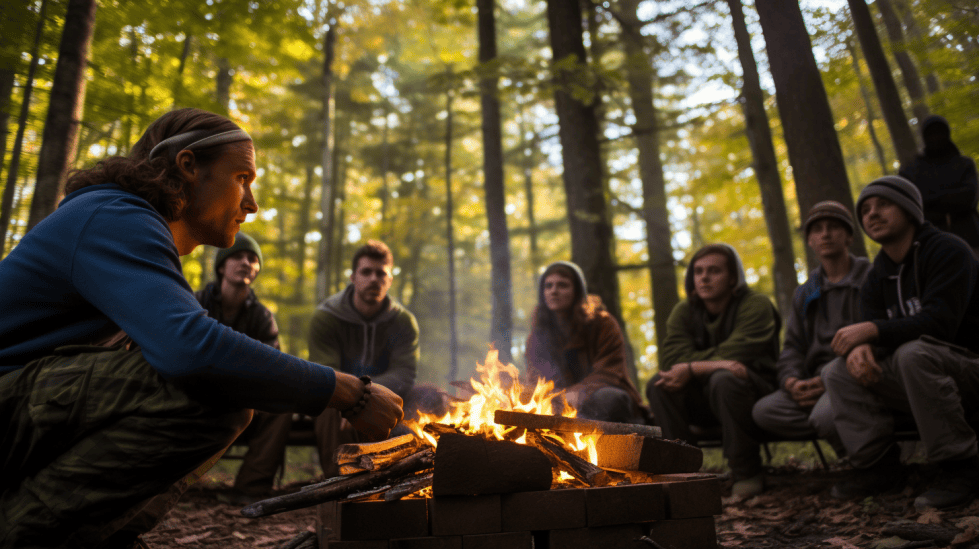Ultimate Survival Tips
When it comes to ultimate survival tips, being prepared is essential for successfully navigating any unexpected situations. From natural disasters to unexpected emergencies, having the right skills, equipment, and mindset can make a significant difference in one’s ability to overcome challenges. In this article, we’ll delve into some fundamental concepts and strategies to help you be more prepared, no matter what situation you may face.
Developing essential survival skills, such as knowing how to find water, build a fire, and create improvised shelter, is a critical aspect of being prepared. Moreover, assembling a well-curated survival kit can ensure that you have the necessary tools and resources in times of need. Equipping yourself with the know-how to recognize and eliminate threats is also an essential step to fortify your safety plans. By understanding various scenarios and preparing accordingly, you can ease the possible stress and danger of such events.
Key Takeaways
- Adopting essential survival skills helps individuals stay prepared for emergencies and unexpected situations.
- A well-curated survival kit serves as a vital toolset for coping with various challenges and disasters.
- Familiarizing oneself with safety guidelines and recognizing potential threats offers a more comprehensive outlook for improved preparedness.
Essential Survival Skills
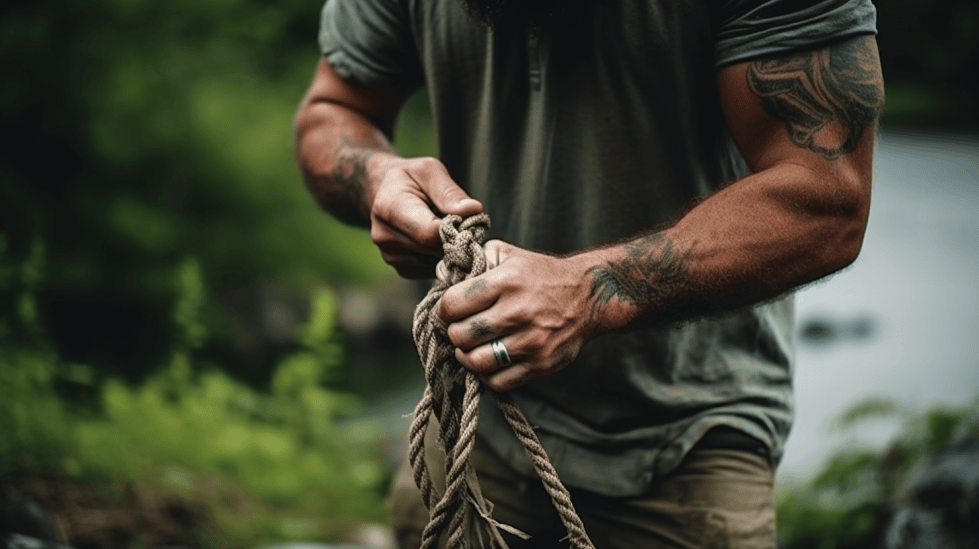
Practical Skills
As an adventurer, I believe in the power of being prepared for any situation. One of the key aspects of preparation is developing a solid foundation of practical skills. These skills include orienteering, knot-tying, and basic first aid.
- Orienteering: I find that being able to read a map and use a compass is crucial when venturing into the wilderness. This skill helps me stay on course and find my way back to safety when lost.
- Knot-tying: I’ve learned that mastering a few essential knots can come in handy in many survival situations. Whether it’s securing a shelter or attaching gear to my backpack, knot-tying skills can make a significant difference.
- First aid: In my experience, having a basic understanding of first aid can save lives. I know to recognize and treat common injuries like cuts, burns, or fractures, and when to call for help.
Basic Survival Skills
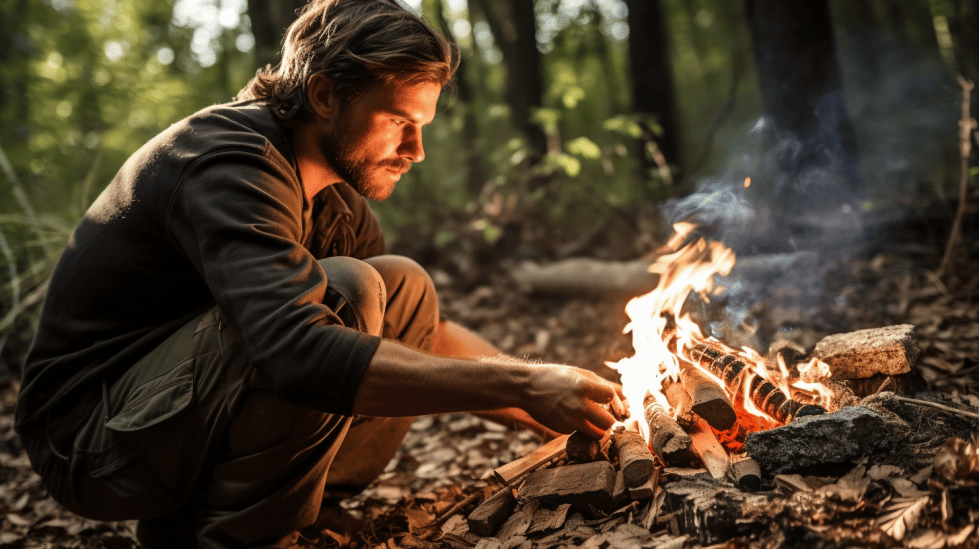
In addition to practical skills, there is a set of basic survival skills that I consider essential for anyone venturing into the great outdoors. These include:
- Finding and purifying water: I prioritize finding a water source since the human body is 60% water, requiring constant rehydration1. I’ve mastered techniques for locating and purifying water, including collecting rainwater, using solar stills, or boiling water to kill bacteria.
- Fire-building: I have learned the best way to build a fire, starting with dry leaves or pine needles as tinder, followed by small twigs as kindling, and larger logs for fuel. I always carry waterproof matches or a firestarter in my pack for emergencies.
- Shelter construction: Constructing a shelter helps me stay protected from harsh weather conditions. I’ve practiced creating different types of shelters, such as lean-tos or quinzhees, depending on the available materials and climate of my location.
To be a confident and knowledgeable adventurer, I strive to continuously improve my practical and basic survival skills. As a result, I feel prepared to handle any situation I may encounter in the wilderness.
Footnotes
Survival Equipment
As an outdoor enthusiast, I always make sure to have the right survival equipment with me, especially when venturing into the wilderness. In this section, I’ll share my insights on essential gear like survival knives, everyday carry items, and solar panels.
Survival Knives
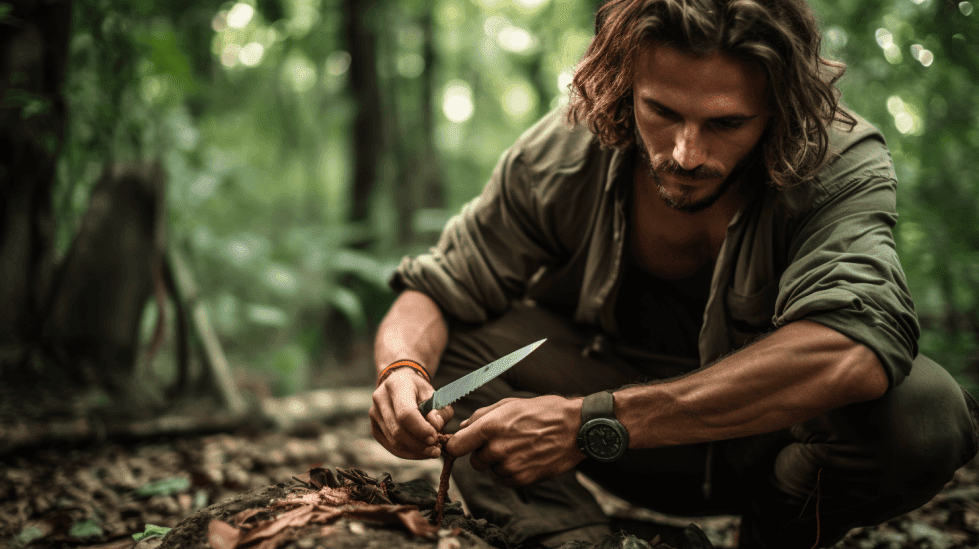
A good survival knife is crucial when navigating through the wilderness. I usually opt for a durable, sharp, and versatile model. My personal experience shows that fixed blade knives are more reliable than folding knives, as they are less likely to break under stress. High-quality materials like stainless steel and carbon steel are preferable for the blade, while a comfortable and non-slip handle is also essential. Ultimate Survival Tips on YouTube offers demonstrations of various knives and their features.
Everyday Carry
An essential part of my everyday carry (EDC) includes items that can be useful in emergency situations. I ensure to have a small, portable, and high-quality flashlight, like the Prometheus Lights Beta QRv2. I also find it essential to keep a multi-tool on hand, such as a Swiss army knife, which provides various tools like scissors, a bottle opener, and a small blade. A sewing needle is another small but highly practical item, useful for repairing clothes and gear on the go.
Solar Panel
Since many modern devices rely on electricity, having a portable solar panel in my survival equipment allows me to charge my essential electronics like flashlights, GPS, and communication devices. When choosing a solar panel, I prioritize models that are lightweight, compact, and waterproof. It’s also important to check the panel’s power output, as higher wattage panels can charge devices more quickly. In my experience, a high-quality solar panel is an invaluable investment for off-the-grid adventures and emergencies.
Natural Disaster Preparedness
As someone who is always prepared, I have gathered valuable information on how to be ready for various natural disasters and emergencies. In this section, I will focus on two important aspects of disaster preparedness: power outages and survival situations.
Power Outages
Power outages are a common occurrence during natural disasters such as hurricanes, earthquakes, and severe storms. To prepare for a power outage, I follow these steps:
- Backup power sources: I invest in an emergency generator and stock up on batteries for flashlights and other essential items.
- Non-perishable food and water: I store at least a three-day supply of non-perishable food and water for each person in my household.
- Communication plan: To stay informed during an outage, I have a battery-powered radio, and I make sure my family knows how to locate each other in case of an emergency.
- Food safety: I keep my refrigerator and freezer doors closed as long as possible to maintain the cold temperature. I also have a cooler and ice packs ready to store perishable items if needed.
Survival Situations
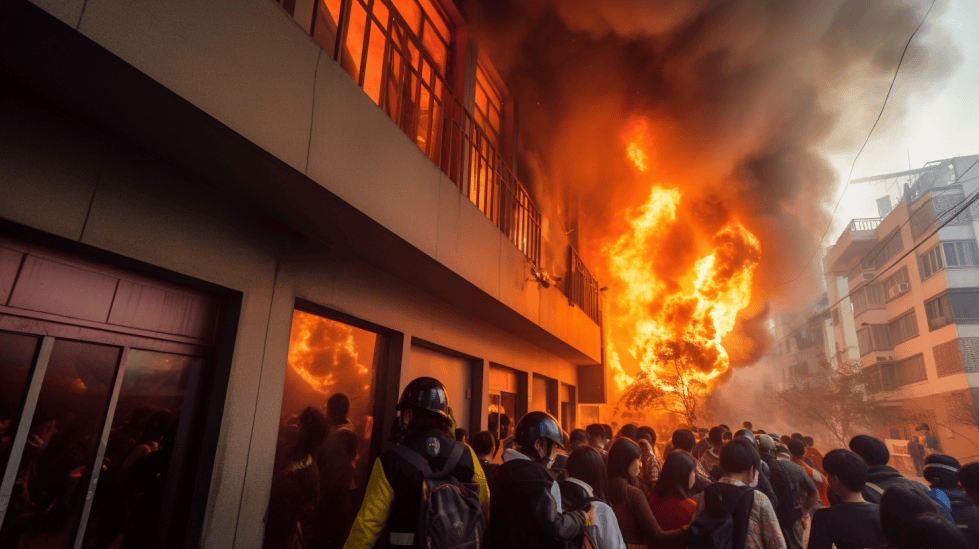
In a survival situation, my primary goal is to stay safe and alive until help arrives. Here’s what I do to prepare:
- Know the risks: I educate myself on the types of natural disasters that are common in my area and create a plan accordingly.
- First aid: I keep a well-stocked first aid kit and familiarize myself with basic first aid skills, such as how to treat wounds, burns, and fractures.
- Shelter: Depending on the disaster, I determine whether it’s safer to remain indoors or evacuate. If I choose to stay, I designate a safe room in my house with minimal windows and doors.
- Evacuation plan: If I need to evacuate, I create a plan with multiple exit routes and meeting points, and I ensure my vehicle is ready to go at all times.
By following these tips, I feel confident in my ability to handle power outages and survival situations during a natural disaster. Knowledge and preparation are essential in these cases, and I make sure to stay informed and update my plans regularly.
Selection of Survival Kits
Tiny Survival Card
I’ve come across a great innovation called the Tiny Survival Card. This compact and lightweight card fits conveniently in my wallet, serving as an emergency backup tool for essential survival needs. The card comes with various useful components such as mini knife, fish hooks, sewing needles, and more. Personally, it gives me a sense of confidence knowing I have these tools on hand, just in case I ever need them.
The best part is how easy it is to assemble these tools when needed, allowing me to focus on the task at hand without fumbling through a disorganized pouch. I appreciate the way it combines so many valuable items into a small, portable package.
Fixed Blade
Another important item to include in a survival kit is a fixed blade knife. There is a wide range of options available, from lightweight blades to heavy-duty ones, depending on your preferences and requirements. A trusty fixed blade is invaluable in many situations, such as cutting cords, preparing food, or assisting in building emergency shelters.
I find having a well-built, sturdy knife that I can rely on is a must-have in my survival kit due to its versatility. Ultra-reliable fixed blade knives are typically made of stainless steel and come with a durable sheath for safe storage.
It’s essential to carefully evaluate the blade size, material, and handle design to ensure your chosen knife suits your needs and is comfortable to work with during outdoor adventures or emergencies.
In conclusion, investing in a high-quality, well-designed survival kit with essential tools and items is an important step in being prepared for any emergency scenario. Including a Tiny Survival Card and a fixed blade knife in your kit will enhance your ability to stay safe and endure difficult situations.
Joining a Survival Community
I recently decided to explore the idea of joining a survival community, and in doing so, I did some extensive research. I wanted to share my findings with those who might be considering taking a similar step towards becoming more prepared for emergencies and disasters.
After evaluating numerous options, I discovered that the key to finding the right community is to focus on those with like-minded members who prioritize learning and sharing knowledge about survival. In my search, I came across My Survival Forum which boasts a strong community dedicated to prepping for survivalists, doomsday preppers, and even campers. With over 15,000 posts, they provide valuable information on survival gear, food storage, and prepper tips.
Joining a community like this one offers numerous benefits. For starters, I found that collaborative learning and group discussions helped me to gain a more well-rounded understanding of various survival skills. Additionally, I was able to form connections with other community members, which can lead to the development of essential networking and teamwork skills.
When I started to participate in the survival community, I had a chance to join David, one of the notable members, in an online discussion. He provided valuable input on essential skills and resources for preparedness. Through interacting with him and other members, I was able to enhance my own knowledge base and make informed choices about my own survival plans.
Of course, joining a survival community comes with some challenges as well. It’s important to remember that different group members may have varying opinions on preparedness techniques and strategies. It’s crucial to approach these discussions with an open mind and a willingness to engage in respectful conversations.
In conclusion, joining a survival community has greatly benefited my personal preparedness journey. By connecting with experienced individuals like David and actively participating in group discussions, I have been able to grow my skills and knowledge. While it requires dedication and open-mindedness, being part of a survival community can offer valuable support and resources for those looking to enhance their preparedness and resiliency.
Survival Shopping Tips
Shipping Costs
When I shop for survival gear, I always consider shipping costs. Online stores may offer lower prices on items, but they can get you with hefty shipping fees. To save money, I look for retailers who offer free shipping on minimum order values or regular promotions on shipping costs. Shopping during holiday seasons or special sale events can be a great opportunity to get discounted or free shipping.
Discount Codes
Discount codes are essential when it comes to saving money on survival gear. I make it a point to search for discount codes before making purchases. Websites like RetailMeNot and Honey offer browser extensions that automatically search for and apply discount codes at checkout. Signing up for newsletters of my favorite retailers also gives me access to exclusive discounts and promotions.
Promo Codes
When shopping for survival gear, I utilize promo codes to get the best deals. I find that promo codes usually come in the form of limited-time offers, seasonal sales, and exclusive deals for loyal customers. Social media platforms and email newsletters help me stay updated on the latest promo codes from my favorite brands. In addition, I join forums and communities related to survival, prepping, and outdoor gear, where members share promo codes and notify others of ongoing sales.
Remember, when shopping for survival gear, it’s essential to consider shipping costs, search for discount codes, and find the best promo codes to get the most bang for your buck. Keep a sharp eye out for deals, and you’ll be well on your way to building an affordable and well-stocked survival kit.
Safety Guidelines
As a survival enthusiast, I’ve gathered some essential safety guidelines that can help you stay safe and respond effectively in any survival situation. These guidelines touch on areas like speed limits and dark mode.
First and foremost, it’s crucial to abide by the speed limits, especially when driving through unfamiliar terrain or during severe weather conditions. Not only will obeying speed limits increase your chances of avoiding accidents, but it also gives you better control of your vehicle, ensuring that you can react promptly to any unexpected obstacles.
Additionally, regular maintenance of your vehicle is vital. Always check the brakes, tire pressure, and ensure all the lights are functional before setting out on any journey. This preventative measure can save you from potential accidents and ensure your vehicle remains reliable in a crisis.
As for dark mode, it’s an effective technique to use in survival situations where you need to remain undetected or conserve energy. For example, when camping in the wilderness or trying to evade an imminent threat, it’s important to minimize any sources of light and noise. This way, you’ll be less likely to attract unwanted attention.
When implementing dark mode in your campsite, consider the following tips:
- Use minimal lighting: A small torch or dimmed headlamp would be sufficient to navigate in the dark.
- Silence your devices: Ensure your phone is on silent or vibrate mode, and avoid using noisy equipment.
- Limit the use of fire: If possible, use a portable stove instead of an open flame to reduce light and smoke.
In conclusion, following the safety guidelines regarding speed limits and dark mode can significantly improve your chances of surviving and remaining safe in survival situations. Practicing these techniques regularly is the key to being well-prepared for any unexpected events that may arise.
Conclusion
In my experience, being prepared for the unexpected is crucial when trying to survive in the wild. Equip yourself with essential tools such as a compass or handheld GPS device and always carry items that can help you in case of emergencies.
One of the most important skills I’ve learned is how to build a fire. Not only can fire keep me warm and cook food, but it also serves as a deterrent for wild animals when needed. As a survivalist, I often use waterproof matches or firestarters to ignite dry materials like leaves, pine needles, or small pieces of wood to create a fire (source).
My experience also teaches me the importance of crafting a short-term survival shelter for protection against the elements. I’ve come to appreciate the value of duct tape, which is a versatile and invaluable tool in many survival situations, whether it’s for making repairs or creating makeshift solutions (source).
Additionally, I’ve honed my primitive woodworking skills, enabling me to create essential tools and items from the environment around me. By simply using a good knife, I can craft clubs, bows, arrows, and other tools needed to survive (source).
In conclusion, I firmly believe in the necessity of being prepared, adaptable, and resourceful when facing [bad things] in the wild. By mastering these survival skills and always staying alert, you exponentially increase your chances of overcoming any challenging situations that may arise.
Frequently Asked Questions
What are the essential items for a pocket survival kit?
In my experience, a pocket survival kit should include a few basic items. Some must-haves are a mini multi-tool, fire starter, compact flashlight, small compass, and a signal mirror. These items will help with navigation, starting a fire, and signaling for help. Remember, this is just a starting point, and you can customize your kit based on your personal needs and environment.
How to choose the best survival neck knife?
When choosing a survival neck knife, I consider factors such as blade material, size, and overall design. Look for a high-quality stainless steel or carbon steel blade, as these materials are durable and easy to maintain. The blade should be around 2-4 inches, which is a versatile size for various tasks. Ensure the knife has a comfortable grip and a secure sheath for safe carrying.
What should be included in a wallet survival kit?
A wallet survival kit is designed to be compact, so I focus on small but practical items. Essentials like a mini multi-tool or card-sized tool, a flat whistle, a small mirror or reflective surface, and a compact compass are great to have on hand. Additionally, you can include a waterproof container for matches or tinder, signaling materials, or even emergency cash.
Which features make a knife the ultimate survival tool?
For a knife to be considered the ultimate survival tool, it should have multiple functionalities. In my opinion, a fixed blade is more reliable than a folding one, and the blade should be made of high-quality steel. A full tang design adds strength and durability, while a comfortable handle with a secure grip is essential. Additional features, like a serrated edge or integrated fire starter, can also be useful.
What is the most important survival equipment for adventures?
The most important survival equipment can vary from person to person and depends on the specific adventure. However, I think that having a reliable method to start a fire, a means of navigation, and a way to signal for help are essential for any adventure. This could include tools like a fire starter or lighter, a compass or GPS device, and a whistle or signal mirror.
How to build a versatile and efficient survival EDC?
When building a survival EDC (Everyday Carry), I focus on selecting compact yet versatile items. It’s essential to have tools for cutting, starting a fire, and signaling for help. This could include a folding knife or multi-tool, a compact flashlight, and a small whistle. Consider your specific needs, environment, and activities when selecting items. Finally, organize your EDC in a practical and easily accessible way, using pouches, carabiners, and keychains.


